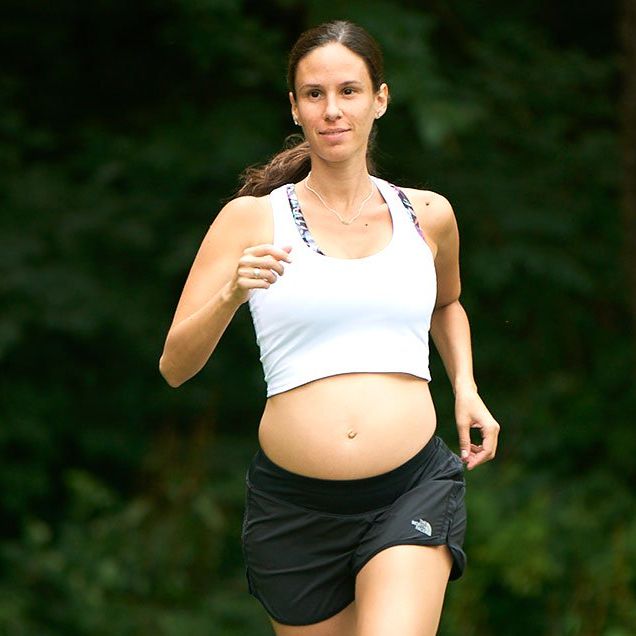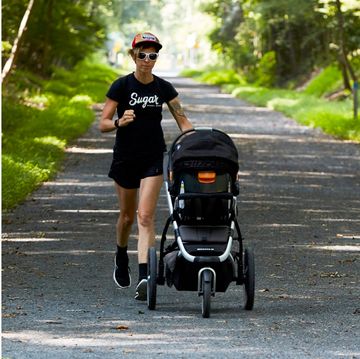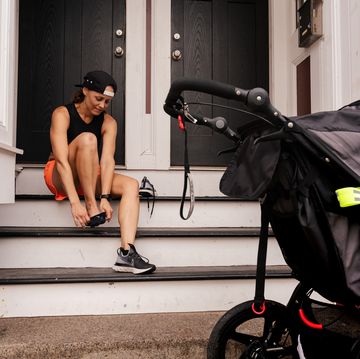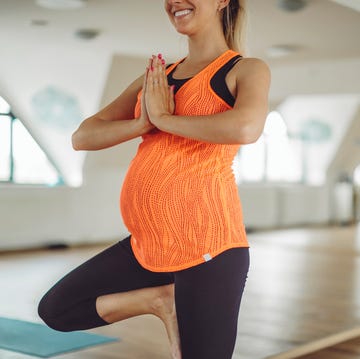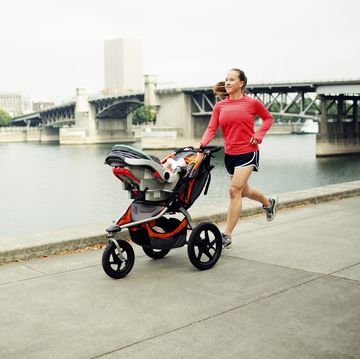No matter what you do, there will be folks who wag their fingers and chastise your decision to keep your running rather than take to the couch during your pregnancy.
Related: How to Have a Healthier Pregnancy
Here are some of the most common myths my clients hear from the doomsayers in their lives and the reality check I give them to stand their ground.
Myth: If you weren’t running before you got pregnant, now isn’t the time to start.
Reality: Pregnancy is the ideal time to start moving. If you are just starting out, run-walking is the perfect place to start, and is not deemed unsafe. The real hazard is inactivity, which contributes to excess weight gain, high blood pressure, and aches and pains, as well as a higher risk of C-section and gestational diabetes.
Myth: Running causes an increase in early pregnancy loss, stillbirth, or neonatal death.
Reality: There is no evidence of any increase in miscarriage risk, stillbirth, or neonatal death with any exercise. Quite the contrary, exercise improves placenta growth and fetal development.
Related: 5 Pregnancy Tips for Having Healthier Babies
Myth: Things like resistance and strength training during pregnancy can cause joint injury because relaxin makes ligaments feel looser, so you’re at a higher risk of hurting yourself.
Reality: The relaxin risk is mostly a theory. There is a lack of reputable studies showing increased risk of injury, though it makes common sense that there might be. But now isn’t the time for power lifting anyway (you can assure your concerned family and friends that you’re not lifting a bus). Keep in mind that you’re going to need to be strong once the baby comes, and strength training is the best way to prepare. In a 12-week study of 32 pregnant women who’d never done any weight training, the researchers found that they improved their strength (as measured on the leg press) by 36 percent by lifting just twice a week. They suffered no injuries, and their blood pressure didn’t rise during or after the workouts. As soon as the women learned and employed proper breathing techniques, any minor side effects such as dizziness, headache, and pelvic pain subsided.
Myth: If you are very athletic, you need to greatly dial down your exercise intensity. Otherwise you’ll go too hard, overheat, and deprive the baby of oxygen.
Reality: You will naturally need to taper down your intensity. You are not going to be setting any personal bests or winning races in the next 9 months, so you shouldn’t be doing high-intensity interval training right now. But maintaining your training is fully appropriate with your doctor’s approval. Your body is accustomed to the stress of exercise, so your typical state of being and your existing metabolism are based on a level that includes exercise. There’s a greater risk of weight gain, decreased fitness, and less-than-optimum fetal development if you suddenly stop exercising.
Related: 5 Yoga Poses to Relieve Pregnancy Aches and Pains
Myth: Running is especially unsafe during pregnancy. you might shake the baby loose.
Reality: As long as you have no pain or change in joints, running during pregnancy is fine. The baby is cushioned by amniotic fluid and cannot be shaken loose. Round ligament pain can inhibit pace, stride, and ability to maintain current speed and distance. So listen to your body; slowing down will happen, and that’s okay.
Myth: You shouldn’t work your abs. Lying flat on your back can compress the vena cava and cut off oxygen to the placenta.
Reality: You need a strong core, and doing Kegels isn’t enough! True, you should ditch the crunches (honestly, they’re not very functional anyway, since they only work the rectus abdominals and not much else). Instead try key core moves such as side planks.
Adapted from Roar
The article 6 Myths About Exercising During Pregnancy originally appeared on Rodale Wellness
